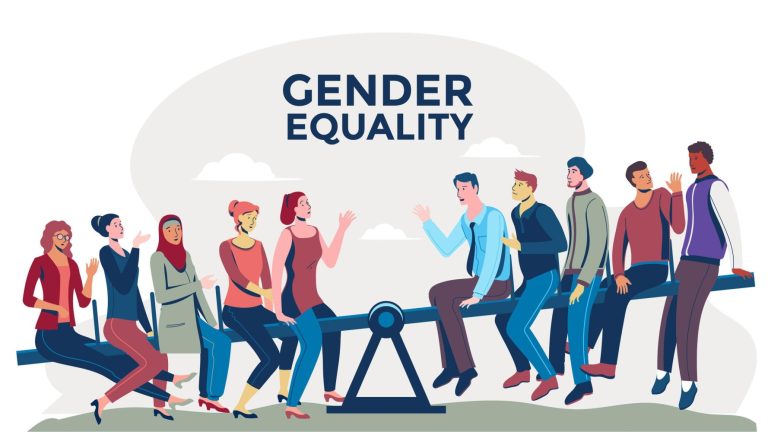Graça Machel’s quote serves as a compelling call to action for gender equality, emphasizing its potential to create a fairer, more prosperous, and happier world. However, it’s pertinent to recognize that achieving gender equality is a complex and multifaceted endeavor that requires a nuanced understanding of its various dimensions and their interactions with other societal factors. Zooming in on the narrative of human progress, gender disparities have assayed a significant role. These differences have affected various aspects of society throughout history and continue to do so today. However, one socio- economic avenue where gender inequality is less explored is blue-collar jobs.
Factors Fueling the Divide
The saga of gender disparities in blue-collar occupations begins with a steady convergence of societal factors. Our recently conducted survey points to the stubborn remnants of traditional gender roles as a prime contributor to this divide. Women continue to be shackled by perceptions that certain jobs are “men’s work,” perpetuating stereotypes that hinder their entry into these fields.
Traditional Gender Roles: Society has long held traditional expectations about the roles of men and women. Historically, certain jobs have been associated with masculinity, while others have been considered more appropriate for women. These entrenched stereotypes persist in many cultures, influencing individuals’ career choices and opportunities.
Social Norms: Social norms play a crucial role in shaping behavior. In the context of blue-collar jobs, societal norms can discourage women from pursuing careers in male-dominated fields. Peer pressure, family expectations, and community attitudes all contribute to these norms.
Gender disparities in blue-collar occupations reveals a complex, multifaceted challenge. But within the challenge lies the opportunity for transformation.
Educational Opportunities: Access to education and vocational training can differ based on gender. In some regions, girls may have limited access to educational programs that prepare individuals for careers in traditionally male-dominated industries. This lack of educational opportunities can restrict their ability to enter such fields.
Lack of Female Role Models: The scarcity of female role models in blue-collar occupations can be a deterrent for women. Seeing few women in leadership or skilled positions within these fields can create a perception that such careers are not viable options for them.
Economic Factors: Economic considerations also play a role. Blue-collar jobs often come with wage disparities between genders, where women may earn less than their male counterparts for the same work. This wage gap can further discourage women from pursuing these careers.
Policy and Advocacy: The presence or absence of policies and advocacy initiatives aimed at promoting gender diversity in blue-collar industries can be a significant factor. Supportive policies, programs, and advocacy efforts can help break down barriers and create more inclusive work environments.
Also read: Majid Ali Khan joins CMS IT Services as Head of Talent Acquisition
Biases in the system
The recruitment and hiring process, an initial gateway to these professions, often harbors subtle yet insidious biases. Our survey reveals that disparities persist in job advertisements, qualifications, and even interview processes. Job descriptions laden with masculine language and suggestive overtones can deter women from applying, while qualifications might be tailored in a way that inadvertently favors male applicants.
The workplace environment, a crucible where equity and inclusivity should reign, often falls short. Respondents shared that, despite some progress, the blue-collar world can still be inhospitable for women. Once inside the blue-collar workforce, women face yet another hurdle: disparities in career advancement opportunities. Survey results unequivocally show that gender disparities persist in the ascent up the career ladder. Factors such as unequal pay, overlooked promotions, and limited access to leadership roles form the formidable obstacles that women must navigate.
The Way Forward
Despite these grueling challenges, there is a glimmer of hope. Some respondents report the presence of support and training programs tailored to address the unique needs of women in blue-collar roles. These programs aim to level the playing field by offering mentorship, skill development, and a sense of belonging. Malti, an apprentice plumber, highlights her mentor who, as a seasoned plumber herself, has been instrumental in inspiring her growth. This mentorship proves that women lifting each other up can surmount gender barriers.
The gender disparities in blue-collar occupations are undeniably complex. However, it is a challenge that society cannot afford to ignore. The solution demands a multipronged approach: dismantling stereotypes, reforming recruitment practices, fostering inclusive workplaces, and ensuring equal opportunities for advancement. The machinery of progress awaits a united front, where gender ceases to be a dividing line and becomes a rich boiling pot of diversity and strength.
Foundation for Gender Equality
As we empower women to break free from the chains of occupational biases, we must simultaneously ensure that their financial rights and opportunities are equally unshackled. Financial inclusion, the bedrock of economic empowerment, often eludes those who find themselves on the wrong side of the gender divide. Women who are fighting to be heard and respected in blue-collar workplaces may also find themselves battling for financial independence. To truly bridge the gender gap, we must bridge the financial divide. This entails not only addressing disparities in income but also dismantling systemic barriers that hinder women’s access to financial services, resources, and decision-making power.
In summation, the excavation of these gender disparities in blue-collar occupations reveals a complex, multifaceted challenge. But within the challenge lies the opportunity for transformation—a world where the clang of metal and the hum of machinery are accompanied by the harmonious symphony of gender equality. However, as we collectively strive to unveil and address gender disparities in blue-collar occupations, let us not forget that financial inclusion is a vital note in this harmonious journey. The future beckons us to harmonize these two narratives, creating a world where all individuals, regardless of gender or occupation, can march boldly toward economic emancipation.






















